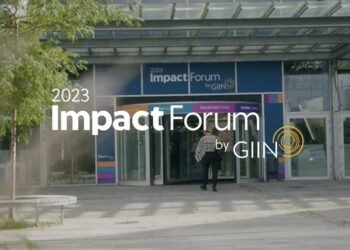COP30 is the 2025 United Nations Climate Change Conference. It is scheduled for November 10–21, 2025, in Belém, the capital of the state of Pará in northern Brazil. The main venues will be centered around City Park and the Hangar Convention & Exhibition Centre, which together will host negotiations, pavilions, and side events. This timing matters because 2025 is the year when countries are expected to submit their next round of national climate plans, often called NDCs 3.0.
Who’s Coming and What’s at Stake
Heads of state, ministers, negotiators, scientists, city leaders, Indigenous representatives, youth activists, and business coalitions will converge in Belém. Beyond the spectacle, the stakes are very real: keeping the 1.5°C goal alive, funding adaptation and resilience at scale, and accelerating a just transition away from fossil fuels. In short, COP30 is where promises must turn into plans that people can see and feel.
Why Brazil and the Amazon Are the Perfect (and Challenging) Host
The Symbolism of Holding COP in the Amazon
Hosting a COP in the Amazon is powerful. The Amazon’s forests store immense carbon, regulate rainfall across South America, and sustain millions of people and countless species. Placing the negotiations in Belém highlights that stopping deforestation, empowering Indigenous guardians, and building resilient local economies are not side quests—they’re central to the climate mission.
Logistics, Costs, and Accessibility Concerns
Belém is vibrant but less accustomed to mega-events than capitals like Dubai or Glasgow. That means tight accommodation, rising prices, and transport bottlenecks are real possibilities. Expect creative lodging solutions, from guesthouses to repurposed facilities. Delegations should plan early, share resources, and schedule meetings close to their pavilions to cut travel time.
What Will Define COP30?
NDCs 3.0 — The 2025 Deadline Every Country Must Meet
What NDCs Are (In Plain English)
Nationally Determined Contributions, or NDCs, are each country’s climate “game plan.” They spell out how fast emissions will fall, how economies will adapt, and what support is needed. Think of NDCs as living documents: updated periodically to reflect new science, technologies, and the reality on the ground.
How the First Global Stocktake Shapes the New Plans
The first comprehensive review of global progress under the Paris Agreement—known as the Global Stocktake—made one message clear: the world must accelerate. That review pointed governments toward scaling renewables, improving efficiency, reducing methane, protecting nature, and building resilience. NDCs 3.0 are where that guidance becomes specific numbers, policies, and timelines.
What Ambition Looks Like in 2025
Ambition in 2025 means:
- Sharper 2030 targets with real sector-by-sector detail (power, transport, buildings, industry, agriculture).
- A 2035 waypoint that keeps countries from backloading action to the 2040s.
- Methane cuts from oil and gas, waste, and agriculture, with monitoring to prove progress.
- Zero-deforestation supply chains and funding to secure Indigenous land rights.
- Adaptation roadmaps—heat plans, water security, flood defenses—anchored in budgets.
- Public participation so communities help shape and benefit from the transition.
Climate Finance After COP29 — Will Money Finally Match Rhetoric?
The New Collective Quantified Goal (NCQG)
The previous hundred-billion-dollar pledge was a start, not a finish line. The NCQG is meant to set a larger, more flexible finance target that addresses mitigation, adaptation, and loss and damage together. Crucially, it should improve access—so funds reach local projects faster—and mobilize private capital without drowning recipients in debt.
Loss & Damage, Adaptation, and Just Transition
Three litmus tests will dominate:
- Loss & Damage: Finance for communities already facing climate-driven devastation, delivered swiftly and fairly.
- Adaptation: Scaling funds for heat-resilient health systems, drought-proof agriculture, and climate-ready infrastructure.
- Just Transition: Ensuring workers and communities are protected and retrained as economies decarbonize, with social dialogue and safety nets built in.
Thematic Days and Priority Tracks
Forests, Food, and Indigenous Leadership
Forests hold the line on climate, biodiversity, and livelihoods. Expect spotlights on Indigenous-led conservation, forest finance tied to performance and rights, and food systems that cut emissions while boosting nutrition and farmer incomes. Traceability—from forest to fork—will be a recurring theme.
Energy, Transport, and Cities
The energy transition is shifting from “if” to “how fast.” Countries will emphasize grids, storage, permitting reform, and workforce training. Transport discussions will expand beyond passenger vehicles to buses, trucks, shipping, and aviation. Cities will showcase building retrofits, district cooling, and waste methane capture as practical, near-term wins.
Nature, Biodiversity, and Oceans
Nature-based solutions—mangrove restoration, peatland protection, regenerative agriculture—can deliver climate and biodiversity gains simultaneously. Expect river-to-ocean thinking: what happens in the Amazon basin shapes fisheries, coasts, and weather patterns far beyond Brazil.
The Big Negotiation Fault Lines
Equity and “Fair Shares”
Developing countries emphasize historic responsibility and the need for affordable finance; developed countries stress that all major emitters must do more, faster. The outcome hinges on how the final deal balances these realities: responsibility, capability, and the urgency to act.
Carbon Markets and Article 6
Carbon market rules remain contentious. Critics fear loopholes and double counting; proponents argue markets can drive down costs and scale ambition. Integrity is the watchword: strong safeguards, transparent accounting, and benefits for local communities are essential to earn trust.
Methane, Deforestation, and the Food System
Cutting methane is one of the quickest ways to slow near-term warming. Pair that with ending deforestation and rethinking food systems—less waste, better soil health, smarter fertilizer use—and you unlock big emissions cuts before 2030. The challenge is aligning policy, finance, measurement, and farmer incentives.
What Success at COP30 Looks Like
Clearer, Stronger 2030/2035/2040 Targets
Success means NDCs with concrete numbers for 2030, interim waypoints for 2035, and credible trajectories toward 2040. These targets should be backed by measures like power-sector coal phase-down schedules, electric bus deployment plans, building codes, and industrial decarbonization roadmaps.
Credible Finance With Delivery Timelines
A finance outcome that specifies how much is coming, from whom, through which channels, and by when. Grants where appropriate, concessional loans where viable, and guarantees and blended finance to mobilize private investment—especially for adaptation and resilience that rarely attract commercial money on their own.
Real-World Implementation Signals
Announcements should pair policies with projects:
- Forest partnership deals that secure Indigenous tenure and scale restoration.
- Methane action plans with leak detection, repair programs, and transparency platforms.
- Utility reforms matched with grid investments and storage deployments.
- Agricultural transition funds that help smallholders adopt climate-smart practices.
How Governments, Businesses, and Citizens Can Prepare
For Policymakers
- Upgrade NDCs with sector detail: Electricity, transport, buildings, heavy industry, agriculture, and land use.
- Budget the transition: Link climate goals to medium-term expenditure frameworks and align public investment with private co-financing.
- Streamline access to funds: Standardize applications, build project pipelines, and support subnational actors in accessing finance.
- Data and MRV: Strengthen monitoring, reporting, and verification so progress is credible and comparable.
For Companies and Investors
- Set science-based targets: Include 2027 and 2030 milestones so performance can be tracked.
- Publish transition plans: Capex schedules, asset retirement timelines, supplier engagement, and R&D priorities.
- Nature-positive strategies: Eliminate deforestation from supply chains, invest in restoration, and support farmer transitions.
- Disclosure and risk: Prepare for stricter climate-risk reporting and due diligence requirements.
For Cities and Civil Society
- Align with national targets: City-level power, transport, and buildings plans that complement NDCs.
- Resilience first: Early warning systems, heat action plans, sponge-city approaches, and nature-based cooling.
- Community finance: Microgrants and local funds that empower Indigenous peoples, youth, and women-led initiatives.
Visiting Belém for COP30 — Practical Pointers
Getting There and Getting Around
Belém’s international airport connects via major Brazilian hubs. Traffic will be heavy; schedule generous transfer windows. The main clusters—City Park and the Hangar complex—will host negotiations and many pavilions. Expect security checkpoints and plan your daily route in advance.
Accommodation Realities and Workarounds
Hotel capacity is limited and demand will be high. Consider:
- Early booking and shared housing with partner delegations.
- Guesthouses or short-term rentals closer to venue clusters.
- Shuttle coordination to reduce costs and time on the road.
Bring patience—and a backup plan.
Staying Safe and Productive
- Register and badge as early as possible, ideally during off-peak hours.
- Pack smart: Water bottle, snacks, portable charger, light rain jacket, and mosquito repellent.
- Time management: Group meetings by location; build buffer time between sessions.
- Tech checks: If hosting side events, confirm room setups and audiovisual needs well ahead.
Conclusion — From Agreements to Amazon Action
COP30 is more than another climate summit. It’s the Amazon COP, the NDCs 3.0 COP, and the finance credibility COP rolled into one. Success in Belém will be measured not just by eloquent speeches but by sharper targets, clearer money flows, and projects that change lives in the near term. If governments, businesses, cities, and communities arrive ready to implement—backed by finance that actually moves—the world can exit COP30 with momentum that bends emissions downward while building resilience from rainforest villages to megacities.
FAQs About COP30
1) When and where is COP30?
COP30 is scheduled for November 10–21, 2025, in Belém, Pará, Brazil, primarily around City Park and the Hangar Convention & Exhibition Centre.
2) Why is COP30 important compared to earlier COPs?
Because 2025 is the deadline for the next round of national climate plans (NDCs 3.0). Countries are expected to increase ambition, sharpen sectoral targets, and show how they’ll fund and deliver them.
3) What finance outcomes should we expect at COP30?
Negotiators aim to translate the new global climate finance goal into concrete delivery: who pays, how much, through which instruments, and on what timeline—especially for adaptation and loss and damage.
4) What themes will be central at COP30?
Forests and Indigenous leadership, food and agriculture, energy and transport transitions, resilient cities, and nature-based solutions that deliver climate and biodiversity benefits together.
5) I’m planning to attend—any travel advice?
Book early, consider shared accommodations, cluster meetings near your pavilion, and allow extra time for security and transport. Bring essentials like a portable charger and repellent, and confirm logistics for any side events well in advance.





